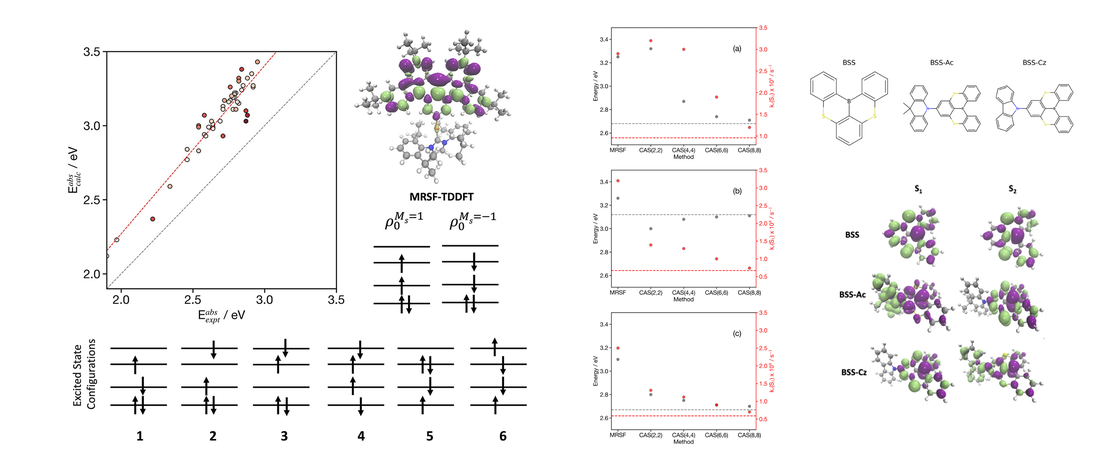
The Photochemistry of Rydberg-Excited Cyclobutanone: Photoinduced Processes and Ground State Dynamics
- Julien Eng, Conor Rankine and Thomas Penfold
- Prediction challenge , Publication
- April 15, 2024
Abstract:
Owing to ring-strain, cyclic ketones exhibit complex excited-state dynamics with multiple competing photochemical channels active on the ultrafast timescale. While the excitedstate dynamics of cyclobutanone after π ∗ ← n excitation into the lowest-energy excited singlet state (S1) has been extensively studied, the dynamics following 3s ← n excitation into the higher-lying singlet Rydberg (S2) state are less well understood. Herein, we couple quantum and excited-state trajectory surface-hopping molecular dynamics simulations to study the relaxation of cyclobutanone following 3s← n excitation and to predict the ultrafast electron diffraction scattering signal that we anticipate to arise from the relaxation dynamics that we observe. Our simulations indicate that relaxation from the initiallypopulated singlet Rydberg state occurs on the hundreds-of-femtosecond to picosecond timescale consistent with the symmetry-forbidden nature of the state-to-state transition involved. Once cyclobutanone has relaxed non-radiatively to the electronic ground state (S0), the vibrationally hot molecules have sufficient energy to form multiple fragmentory products on the electronic ground-state surface including C2H4 + CH2CO (C2; 20%), and C3H6 + CO (C3; 2.5%). We discuss the limitations of our simulations, how these may influence the outcome of the excited-state dynamics we observe, and – ultimately – the predictive power of the simulated experimental observable.
Additional Resources
DOI: arXiv:2402.09140 10.1063/5.0203597
Bibtex
@article{10.1063/5.0203597,
author = {Eng, J. and Rankine, C. D. and Penfold, T. J.},
title = {The photochemistry of Rydberg-excited cyclobutanone: Photoinduced processes and ground state dynamics},
journal = {The Journal of Chemical Physics},
volume = {160},
number = {15},
pages = {154301},
year = {2024},
month = {04},
issn = {0021-9606},
doi = {10.1063/5.0203597},
url = {https://doi.org/10.1063/5.0203597},
eprint = {https://pubs.aip.org/aip/jcp/article-pdf/doi/10.1063/5.0203597/19882852/154301\_1\_5.0203597.pdf},
}


